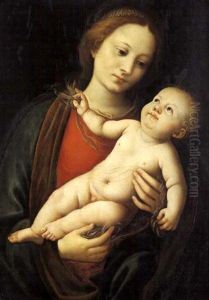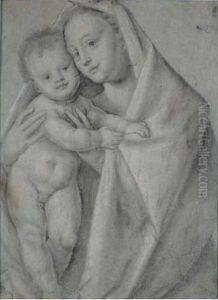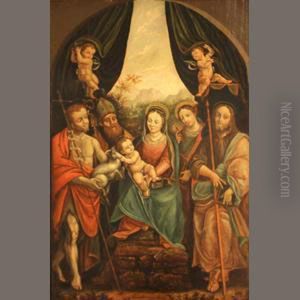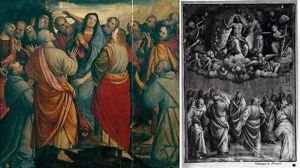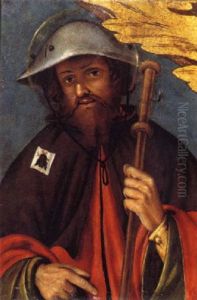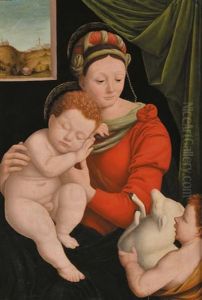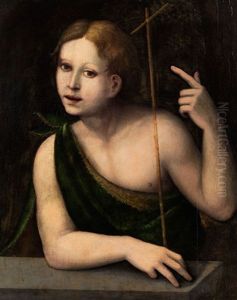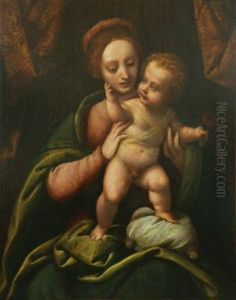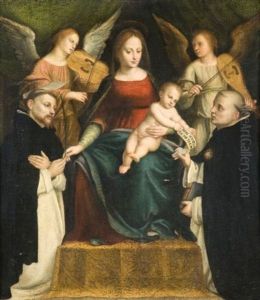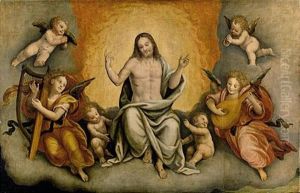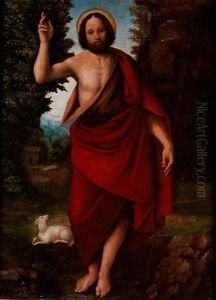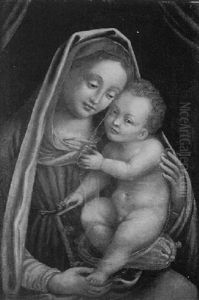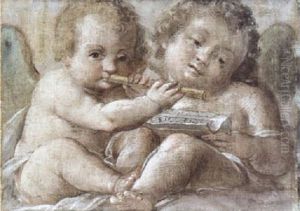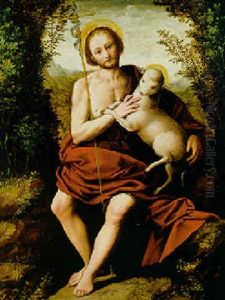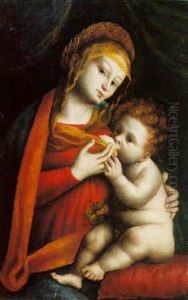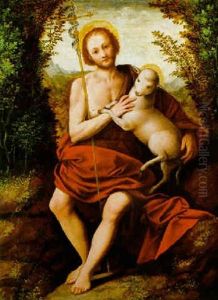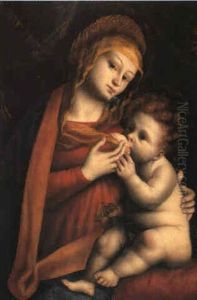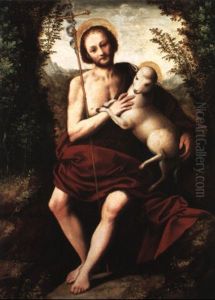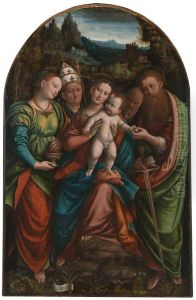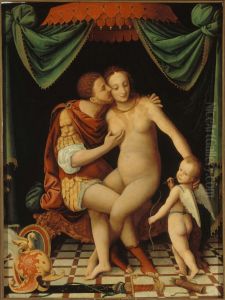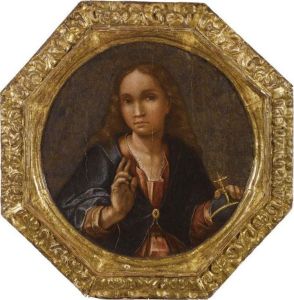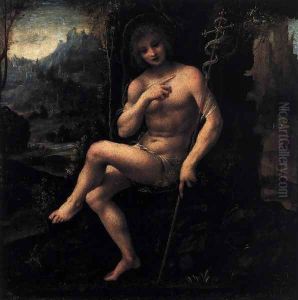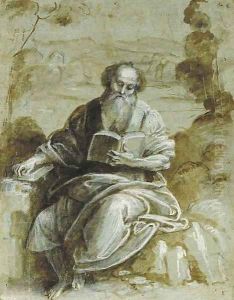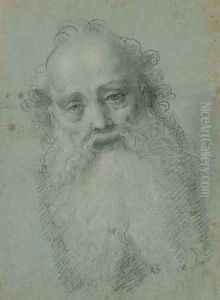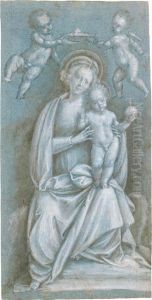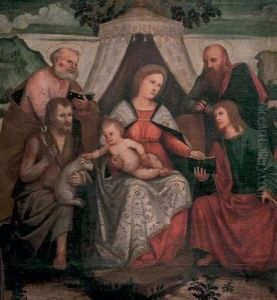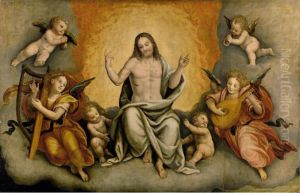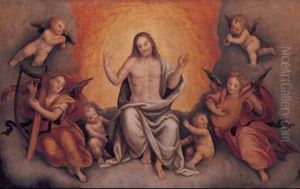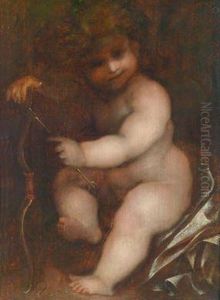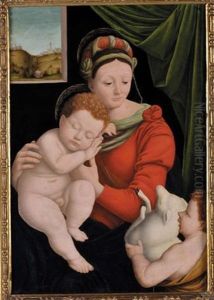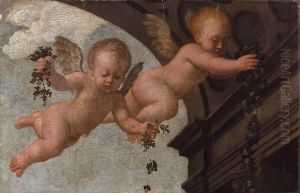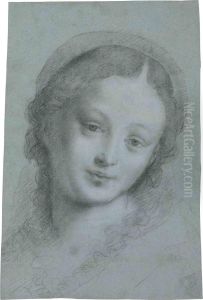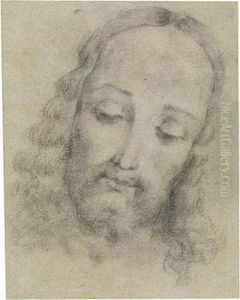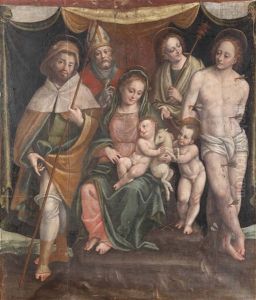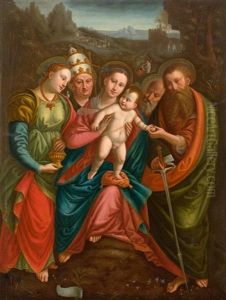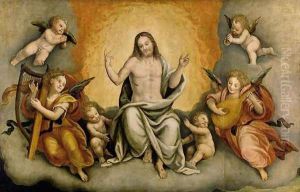Bernardino Lanino Paintings
Bernardino Lanino was an Italian painter of the Renaissance period, born in Vercelli, Piedmont, in 1512. Lanino is considered one of the most significant artists from the northern Italian region of Piedmont during the 16th century. His work reflects the transition from the High Renaissance to Mannerism, showcasing his ability to blend the serene beauty associated with the High Renaissance with the more emotional and elongated figures characteristic of Mannerism.
Lanino's early training is somewhat obscure, but it is believed that he was a pupil of Gaudenzio Ferrari, a leading artist from the region who was known for his frescoes and altarpieces. Under Ferrari's guidance, Lanino developed a keen sense of color and composition, which would become hallmarks of his own work. Lanino's style was also influenced by his exposure to the works of Leonardo da Vinci and other Lombard artists, which is evident in his soft, sfumato technique and the delicate treatment of his subjects.
Throughout his career, Bernardino Lanino primarily focused on religious subjects, creating altarpieces, frescoes, and devotional paintings for churches and monasteries in and around Vercelli. One of his most notable works is the fresco cycle in the Santa Maria delle Grazie in Varallo Sesia, which showcases his mastery in creating dramatic, emotional scenes that engage the viewer. His work in the Cathedral of Vercelli, including the 'Madonna with Saints' altarpiece, is another prime example of his skillful blending of High Renaissance ideals with the emerging trends of Mannerism.
Despite his considerable output and influence in the Piedmont region, Lanino remains less known compared to his contemporaries, such as Gaudenzio Ferrari. However, his contributions to the Italian Renaissance, particularly in terms of his innovative use of color and composition, continue to be appreciated by art historians and enthusiasts.
Bernardino Lanino passed away in 1583 in Vercelli, leaving behind a legacy of art that bridges the gap between the Renaissance and Mannerism, reflecting the evolving tastes and ideas of his time.
